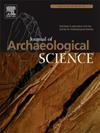Detecting baobab trees (Adansonia digitata) in drone imagery and evaluating their anthropogenic legacy in eastern Africa
IF 2.5
1区 地球科学
Q1 ANTHROPOLOGY
引用次数: 0
Abstract
Recent research has led to a reevaluation of the scale of human impacts on tropical environments, notably through arboriculture. The extent to which this occurred in Africa is poorly understood, but the baobab tree (Adansonia digitata) may serve as a useful proxy for measuring the impacts of long-term human land use. These trees are long-lived, produce important economic products, and function culturally as shrines and markers on landscapes. Archaeologists in eastern Africa have long suspected an association between baobab tree groves and sites, but no full-coverage studies have measured this spatial relationship. This paper explores different methods for detecting this tree species in high-resolution drone imagery, which is increasingly available. Then, the paper evaluates associations between baobab tree distributions and archaeological and historical settlements on the island of Unguja, in Zanzibar, Tanzania. Qualitative assessments and a Nearness test show positive associations between baobab groves and Swahili settlements from the 7th-18th centuries CE. Thismay reflect the anthropogenic factors of baobab dispersal and propagation, especially from the 11th c. onward. Baobabs are negatively associated with historical 19th-century settlements, possibly reflecting deforestation in areas cleared for clove plantations. These results demonstrate the potential for landscape analysis with full-coverage, high-resolution drone imagery, and shed light on the baobab tree as an anthropogenic legacy in the African tropics.
在无人机图像中检测猴面包树(Adansonia digitata)并评估其在东非的人为遗产
最近的研究导致了对人类对热带环境影响程度的重新评估,特别是通过树木栽培。这种情况在非洲发生的程度尚不清楚,但猴面包树(Adansonia digitata)可以作为衡量人类长期土地利用影响的有用代理。这些树木寿命长,生产重要的经济产品,并在文化上作为圣地和景观标志发挥作用。长期以来,东非的考古学家一直怀疑猴面包树树林和遗址之间存在联系,但没有全面的研究测量过这种空间关系。本文探讨了在越来越多的高分辨率无人机图像中检测这种树种的不同方法。然后,本文评估了猴面包树分布与坦桑尼亚桑给巴尔Unguja岛上考古和历史定居点之间的联系。定性评估和接近性测试表明猴面包树林与公元7 -18世纪的斯瓦希里人定居点之间存在积极联系。这可能反映了猴面包树扩散和繁殖的人为因素,特别是从11世纪开始。猴面包树与19世纪的历史定居点有着消极的联系,可能反映了为了种植丁香而砍伐森林的地区。这些结果展示了利用全覆盖、高分辨率无人机图像进行景观分析的潜力,并揭示了猴面包树作为非洲热带地区的人为遗产。
本文章由计算机程序翻译,如有差异,请以英文原文为准。
求助全文
约1分钟内获得全文
求助全文
来源期刊

Journal of Archaeological Science
地学-地球科学综合
CiteScore
6.10
自引率
7.10%
发文量
112
审稿时长
49 days
期刊介绍:
The Journal of Archaeological Science is aimed at archaeologists and scientists with particular interests in advancing the development and application of scientific techniques and methodologies to all areas of archaeology. This established monthly journal publishes focus articles, original research papers and major review articles, of wide archaeological significance. The journal provides an international forum for archaeologists and scientists from widely different scientific backgrounds who share a common interest in developing and applying scientific methods to inform major debates through improving the quality and reliability of scientific information derived from archaeological research.
 求助内容:
求助内容: 应助结果提醒方式:
应助结果提醒方式:


